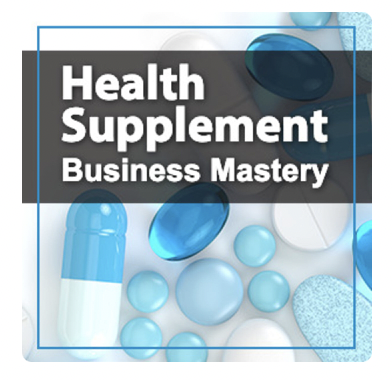What is an FDA disclaimer statement?
In plain english, it’s the required text that a dietary supplement product, marketing material and website sales page needs to have by law.
It simply states that your supplement is not meant to treat any disease.
We would be remiss in our series of what’s allowed and not allowed when marketing dietary supplements without clearly discussing what a proper and required disclaimer example looks like.
Of course, the disclaimer itself won’t allow you to sell more supplements, you’ll also need to market your supplements the right way, I wrote an article about that which you can read here.
Every online page that sells a dietary supplement needs to include the proper fda disclaimer for supplements. Including – copy, placement, size, and style of the disclaimer, which we’ll cover completely in this article.
You may have seen this dietary supplement disclaimer used properly and improperly online. But after reading this article you will understand how to use it exactly as you should so your dietary supplement marketing can stay above board.
To get a full understanding of what’s allowed and not allowed when it comes to claims you can make in your dietary supplement marketing please see our previous articles – Dietary Supplement Claims – What’s Allowed and What’s Not Allowed. And be sure to download our complete guide on the topic for further reading.
The Proper Wording of the FDA Dietary Supplement Disclaimer
The FDA requires this exact dietary supplement disclaimer to be on every sales page where you’re selling a dietary supplement, which includes upsell and downsell pages. (It also needs to be on the actual label of the supplement bottle and any packaging.)
You may have seen it. It’s the one that’s in a box on the label of most dietary supplements.
Being in a box is actually a requirement for the proper use of the disclaimer. If you’re using it online the box border needs to be 1 pixel in width and surround the disclaimer completely.
There are two types of disclaimers, each has its specific use case.
The first one, below, needs to be used when there is only one “statement of nutritional support” a structure or function claim.
Supplement Disclaimer Example:
| This statement has not been evaluated by the Food and Drug Administration. This product is not intended to diagnose, treat, cure, or prevent any disease. |
The second form of this dietary supplement disclaimer is for situations where there is more than one statement of nutritional support, and each statement needs the disclaimer, or a plural disclaimer may be used.
Here’s an example of a proper plural disclaimer:
| These statements have not been evaluated by the Food and Drug Administration. This product is not intended to diagnose, treat, cure, or prevent any disease. |
The Proper Placement of the FDA Dietary Supplement Disclaimer
The disclaimer must be either:
-Paced adjacent to the statement with no intervening material or…
-Linked to the statement with a symbol for example an asterisk at the end of each such statement that refers to the same symbol placed adjacent to the disclaimer.
-On product labels and in labeling including web pages and catalogs, the disclaimer must appear on each web page where there is a statement or claim made. However, it’s safe and good practice to include it on every page that has any sales copy about your dietary supplement.
-The disclaimer must be set off in a box where it is not adjacent to the statement in question. So it can be on the bottom of the page either above the footer or in the footer itself. However, it must be easily readable. Generally, we recommend black text on a white background, which does not work with all web footers. In that case, we usually place it directly above the footer.
The Proper Type Size of the FDA Dietary Supplement Disclaimer
The disclaimer must be in boldface type in letters of a type size no smaller than one-sixteenth of an inch for print, and no smaller than 9 points for the web.
Don’t Get Tripped Up
In the health marketing field, more so than any other field, it’s important to make sure you’ve got all your bases covered.
Compared to what claims are allowed and not allowed the rules for the proper disclaimer are very straightforward. To learn more about making proper marketing claims for a dietary supplement read our previous articles.
Once more, they seem minor but they can easily trip up any marketer, leaving them open to legal trouble. Make sure you’re compliant, it’s not worth the risk.
Discover the 3 funnels that can help your health supplement business succeed.

Listen to the Health Supplement Business Mastery Podcast for for dietary supplement entrepreneurs and marketers.





Is colloidal silver a dietary supplement ? A food ? or a drug ? Does the FDA regulations apply to dogs and cats ?
To be honest I’m not sure where Silver stands as a supplement or a food. I would think a supplement. But I’d advise you to check. As for the FDA regulating supplements for dogs and cats. I believe they do, although one could argue they don’t regulate any supplements just the manufacturing process. However from what i’ve heard in the industry supplements for pets is so far away from the spotlight that it’s practically not looked at all.
I am looking for Dietary Supplements information on the web for last 2 hours and finally I got the right solution here. I think you made some good points in this post. Thank you for this.
Hi Bobby, we are a small independent company in Ireland and we sell our own liquid food supplement of magnesium and minerals. Lately we have been getting requests to supply to the USA. Our products 100% natural and are listed with the FDA and with EFSA. However our insurance cover specifically rules out the USA. Can we sell to a client in the USA but ensure they receive a disclaimer that they purchase at their own risk or something like that?
I need to find where the FDA states the exact required placement of the disclaimer on supplement sales websites. I have been reading through documents for over and hour and have searched the FDA and FTC websites. I cannot find an answer. Can someone pleases provide a link to the actual document from the FDA that shows where disclaimers must be placed on supplement websites?
Stephanie, there’s no exact guideline. Some supplement sites place it in the footer others place it at the bottom of the page content. The FDA does state however that the disclaimer needs to be within a box 1 pixel wide black outline with black text on a white background. But may supplement sites dot follow that. Many supplement owners feel that as long as it’s there somewhere on the page, that’s good enough.